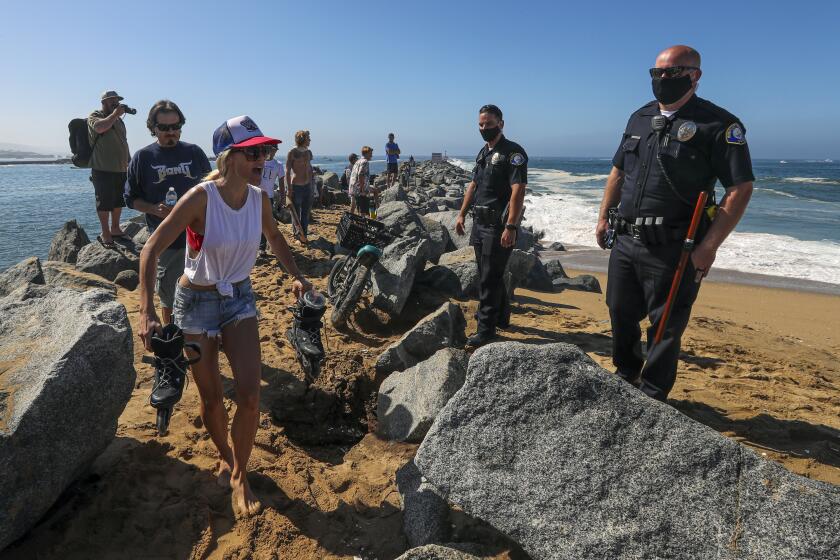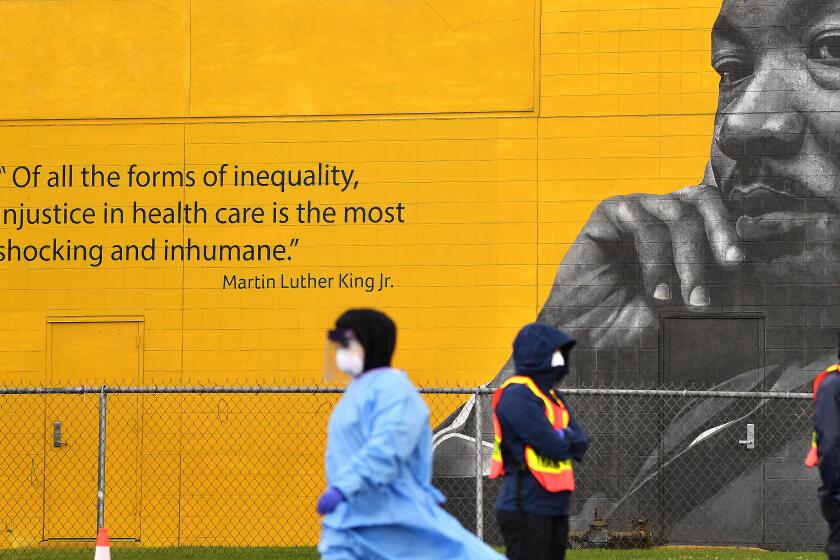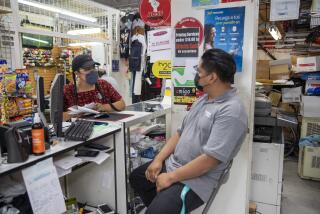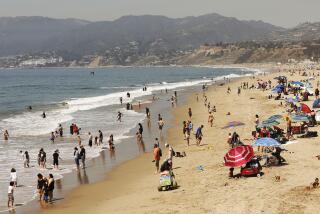Reopening restaurants, malls will be slower in some parts of California than others

- Share via
Gov. Gavin Newsom announced more guidelines Tuesday to allow a greater number of California businesses to open their doors.
But it’s likely that parts of the state hit hardest by the coronavirus will reopen later than areas — mostly in rural counties — that have seen fewer cases.
Here is what we know:
What additional businesses can reopen?
California restaurants and shopping malls in counties that meet state standards for testing and success at reducing cases of the coronavirus can soon reopen, but all businesses will have to abide by state guidelines for physical distancing and cleaning regimens.
Newsom said restaurants could open for dine-in service in counties certified as meeting state benchmarks for addressing the pandemic but should adopt measures to guard against spreading the virus.
Shopping centers including strip malls and outlet malls will be allowed to reopen with in-store customers in certified counties, while car washes and pet groomers also can resume operating with safeguards.
The governor also said Californians who could not work from home would be allowed to work in offices as long as their counties allowed it and the offices were modified to prevent the spread of the virus.
Why will some counties more forward before others?
Before businesses can reopen, a county must complete a risk assessment and develop protection plans that include training employees in how to limit the spread of the virus, providing screenings of workers, and establishing disinfection protocols and physical-distancing guidelines.
The state said Tuesday that seven counties — mostly rural — had met conditions for reopening businesses: Amador, Butte, El Dorado, Lassen, Nevada, Placer and Shasta.
“There are some unique characteristics in some counties where they are hitting on all cylinders,” Newsom said, adding that additional counties may be able to reopen more businesses later Tuesday.
Discussions are underway with 23 other counties on whether they can expand reopenings, the governor said, but he noted that Los Angeles and San Francisco counties were not yet ready to modify their guidelines.
The state plan would allow restaurants to open for dine-in service and other businesses to reopen in counties where local health officials could show that the spread of COVID-19 had stabilized.
Counties must have adequate testing and hospital capacity as well as the ability to trace those who have been in contact with ill people.
Los Angeles County’s stay-at-home orders will ‘with all certainty’ be extended for the next three months, Public Health Director Barbara Ferrer said.
Where do urban counties stand?
Counties in the Bay Area as well as Los Angeles County are expected to reopen more slowly.
Health officials in Los Angeles County — a coronavirus hot spot in California with more than 33,000 cases and 1,600 deaths — signaled that some stay-at-home orders could last well into the summer.
County Public Health Director Barbara Ferrer told the county Board of Supervisors on Tuesday that she didn’t see the timeline shortening without “dramatic change to the virus and tools at hand.” She later added that, although the stay-at-home policy would likely remain, some individual restrictions would be “gradually relaxed” under the county’s five-step plan.
Other local officials said they would support easing more restraints if conditions improved and health experts said it was safe to do so.
“I am eager to reopen more of L.A. County as soon as it’s safe to do so,” Supervisor Kathryn Barger said. “I’m confident that the more our communities continue to comply, the sooner we can resume normalcy.”
Silicon Valley’s health officer announced Tuesday that Santa Clara County had no immediate plans to ease its strict stay-at-home order, saying she couldn’t take that step without increasing the risk to public safety.
The Bay Area’s most populous county, Santa Clara County, was California’s original hot spot in the COVID-19 pandemic. And, although the numbers haven’t surged to catastrophic levels, even a small increase in disease transmission would heighten the risk to vulnerable communities, said Dr. Sara Cody, a key architect of the nation’s first regional shelter-in-place order.
“We’re not there yet,” Cody told the Santa Clara County Board of Supervisors on Tuesday. “The conditions really haven’t changed in our county. ... We don’t suddenly have a vaccine. We have exactly the same conditions we had in March. If we did ease up, we would see a brisk return of cases, of hospitalizations, and a brisk return of deaths, to be quite blunt.”
Cody pushed back against the idea that government officials must choose between public health and the economy.
“Trying to choose between health and the economy is really a false choice. Because unless we make our community safer, and reassure everyone that it really is safe, and they and their family members and customers are not at risk, I don’t think that we’re going to see the [economic] results that we like,” Cody said.
Most California voters say coronavirus is increasing inequality, especially among blacks, poll finds
Some 70% of California voters believe that the COVID-19 pandemic is increasing inequality in the United States, according to a UC Berkeley IGS poll. Most also agreed that there were racial disparities in the virus’ effect.
She also warned that the pandemic was disproportionately infecting and causing deaths among communities of color, particularly among Latinos in Santa Clara County. “The only tool that we have at this moment, to protect vulnerable communities,” she said, “is to bring down community transmission across the board.”
A Times data analysis last week found that most big California counties were not close to meeting Newsom’s standards. The analysis looked at which counties could pass just the first two criteria — whether deaths have stopped in the last 14 days, and whether there is no more than one case per 10,000 residents in that same time period.
Most of California failed that test, including L.A. County. Newsom has suggested that the guidelines will be modified later on a statewide basis, allowing larger counties hit hardest by the outbreak also to reopen more broadly.
More to Read
Sign up for Essential California
The most important California stories and recommendations in your inbox every morning.
You may occasionally receive promotional content from the Los Angeles Times.


















